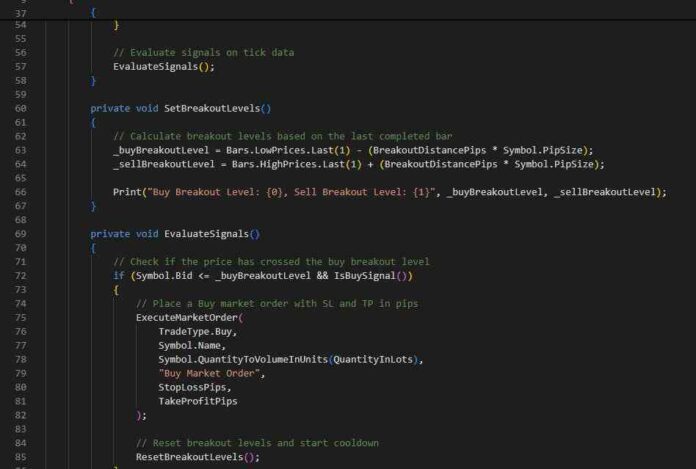Algorithmic trading in 2025 is less about a single “right” stack and more about picking coherent, well-fitted components across research, data, execution, and operations. Below is a pragmatic guide to the choices that matter—and how to combine them into a resilient, cost-aware pipeline that can actually ship and survive live markets.
1) Markets and Time Horizons: pick the battlefield first
Before tools, decide what and how often you trade; this drives every downstream choice.
- Asset classes:
- FX & CFDs/indices: deep liquidity, 24/5, heavy broker differences.
- Equities & ETFs: rich fundamentals and event data, U.S. market microstructure matters.
- Futures: transparent costs, central limit order books, good for trend and seasonality.
- Crypto: 24/7, fragmented venues, exchange risk, latency variance.
- Time horizon:
- Low latency (sub-second to seconds): C++/Rust/C# favored; proximity hosting; FIX/native gateways.
- Intraday minutes to hours: Python or C# with compiled hotspots; robust execution adapters; careful cost modeling.
- Daily/weekly swing or stat-arb: Python first; cloud research; broader datasets.
Rule of thumb: if you can’t measure and control latency + slippage + fees precisely, avoid strategies that require it. Start at horizons where your operational edge is achievable.
2) Data strategy: accuracy beats volume
Your edge is only as real as your data hygiene.
- Vendors & sources: mix official exchange feeds or reputable aggregators for trades/quotes; supplement with fundamentals (filings), macro (central banks), and curated alt-data (news, sentiment, analytics).
- Granularity: use tick or L2 only if you truly exploit microstructure; otherwise consolidate to 1–5 min bars or daily to reduce noise.
- Cleaning: enforce timezone unification, survivorship-bias-free universes, corporate actions, session calendars, and duplicate/zero-volume filters.
- Validation: keep checksums and sample statistics for each ingestion batch; store metadata (vendor, version, timestamp) for auditability.
Cost control: for research, cache to Parquet on object storage; in live, maintain a rolling local cache to avoid vendor round-trips.
3) Research stack: language and libraries
- Python (the default): pandas/NumPy, backtesting.py, Backtrader, vectorbt, Zipline-Reloaded, QSTrader; numba for speedups; TA-Lib or pandas-ta for indicators; scikit-learn, XGBoost, PyTorch/TensorFlow for ML.
- C#/cAlgo/cTrader & MetaTrader: tight integration with brokers for FX/CFDs; good for execution-adjacent logic; interop with Python via REST/WebSockets.
- C++/Rust: when you truly need microseconds or exchange gateways.
- Lean/QuantConnect (open source engine): one codebase for multi-asset backtests and paper/live (if you like that ecosystem).
- Crypto tooling: CCXT for exchange connectivity; freqtrade for retail-friendly crypto research/deployment.
Choice heuristic: prototype in Python; if the profiler says “hot loop,” move just that loop to numba/Cython or a microservice in C++/Rust—not the entire strategy.
4) Backtesting & simulation: realism over optimism
- Clock model: event-driven backtests for intraday; bar-based for daily.
- Costs: tiered commissions, spreads, slippage models (e.g., volume-based, volatility-scaled, or order-book-derived), exchange fees, borrow costs (for shorts).
- Bias controls: guard against look-ahead, survivorship, and multiple-testing. Use walk-forward splits, purged k-fold cross-validation, and white’s reality check style thinking.
- Fill assumptions: simulate partial fills, queue position, market impact for larger orders.
- Out-of-sample discipline: keep a sealed test set and paper trade before going live.
Golden rule: a rough but honest backtest beats a slick, biased one. If your Alpha only “works” under generous fills, it doesn’t work.
5) Execution & brokerage: connections and routing
- APIs:
- Retail multi-asset: Interactive Brokers (TWS/API), TradeStation, Alpaca (equities), Saxo APIs, and similar.
- FX/CFDs: cTrader Open API, MetaTrader 5 gateway, broker REST/WebSockets; consider FIX for stability/latency.
- Futures: direct exchange via FIX or through FCMs with proper market data entitlements.
- Crypto: exchange REST/WebSockets; careful with rate limits, throttling, and downtime.
- Order types: marketable vs limit, pegged, post-only, IOC/FOK; conditional orders for risk.
- Smart routing & venues: U.S. equities: impact of lit vs dark, odd-lot rules, auction interactions; FX: LP selection, A-book/B-book broker behavior.
- Paper trading: always step through sim → paper → micro-live with tight telemetry.
Reliability tips: separate data and execution processes, implement reconnect logic, idempotent order handling, and replay-safe state machines.
6) Infrastructure & deployment: from laptop to live
- Local → VPS/Cloud → Colo:
- Local for research;
- VPS/Cloud (Linode, AWS, GCP, Azure) for 24/7 bots;
- Colocation only if your edge is latency-sensitive and profitable enough to justify rack costs.
- Containers & orchestration: Docker per strategy; supervisord or systemd for small shops; Kubernetes when you truly need horizontal scaling.
- Scheduling: cron/APScheduler for timed jobs; message queues (Redis, RabbitMQ, Kafka) for event pipelines.
- Observability: structured logging, Prometheus/Grafana or vendor APMs for metrics; log-based alerts (PagerDuty/Slack/Telegram).
- Secrets & keys: managed secret stores; rotate regularly; least-privilege access.
Disaster readiness: hot/warm standby bots, DB backups, kill-switch and position flatten routines, and a runbook you actually rehearse.
7) Strategy design choices: rules, stats, or ML?
- Rule-based/technical: trends, breakouts, mean-reversion, seasonality; explainable, fast to implement.
- Stat-arb: pairs/cointegration, cross-sectional ranking, factor tilts; needs clean cross-sectional data and risk controls.
- Event-driven: earnings, macro prints, filings, analyst changes; requires fast data and tight execution windows.
- Machine learning: tree ensembles for tabular alpha, LSTM/Temporal CNN/Transformers for sequences, regime classifiers; use feature pipelines and strict OOS.
- Reinforcement learning: niche unless you control the full sim fidelity and costs; more ops burden than most expect.
Practical pattern: combine a simple base edge (e.g., volatility-scaled trend) with a learned overlay (regime filter or risk-off switch). Keep the core legible.
8) Risk, sizing, and portfolio construction
- Position sizing: volatility targeting, ATR-based stops, fractional Kelly with caps; avoid single-point failure sizing (all-in).
- Constraints: sector/asset caps, max leverage, max holdings, max daily loss, and exposure limits.
- Correlation control: shrinkage/covariance models; risk parity and equal-risk contribution for baskets; beware unstable correlations in stress.
- TCA & slippage tracking: store arrival price, VWAP, implementation shortfall; feed this back to your backtest assumptions.
- Drawdown governance: soft and hard circuit breakers; auto-de-risk on breach; human sign-off to re-enable.
One-pager policy: write your risk rules as code and plain language; the bot enforces, you audit.
9) Ops, compliance, and auditability
- Version everything: code, data snapshots, parameter sets, model binaries.
- Reproducibility: container image hashes + dataset checksums = deterministic reruns.
- Human-in-the-loop: require approvals for big parameter changes; maintain an operations chat with bot summaries.
- Regulatory hygiene: retain logs, trade records, and market data usage rights; respect exchange/vendor licenses and data redistribution clauses.
SRE mindset: if something can fail, it will—design for graceful degradation, not heroics.
10) LLMs and automation in 2025: helpful, with guardrails
- Use cases that work: code scaffolding, doc parsing (e.g., filings), feature brainstorming, translating research notes, summarizing overnight news, drafting incident reports.
- What not to do: let an LLM tune live parameters without strict bounds and manual approval; never allow it to place orders directly.
- Guardrails: whitelists for functions, unit tests for generated code, and a sandbox where models can’t touch production keys.
Treat LLMs as junior research assistants—fast, tireless, occasionally wrong. Your job is to verify.
11) Three archetype “starter kits”
A) Daily cross-asset swing trader
- Market: equities ETFs + liquid futures (ES, NQ) or FX majors.
- Data: daily bars + fundamentals; reliable split/dividend handling.
- Stack: Python, pandas, backtesting.py/vectorbt; TA-Lib for signals; scikit-learn for regime filter.
- Execution: broker API with day-end and next-open logic; simple limit/market orders.
- Infra: VPS with Docker; cron once/day; Prometheus alerting.
- Risk: vol-targeted unit sizing; 2–3% daily loss cap; portfolio max 10–20 lines.
B) Intraday FX/indices mean-reversion
- Market: FX majors, GER40/US500 CFDs.
- Data: 1-minute bars with reliable spread series.
- Stack: Python research + cTrader/MT5 for live execution; numba-accelerated indicator calcs.
- Execution: limit-first with IOC fallbacks; spread filters; session/time-of-day constraints.
- Infra: low-cost VPS near broker; persistent WebSocket; auto-reconnect.
- Risk: ATR stops; hard daily stop; kill-switch on slippage spike.
C) Stat-arb equity basket (hourly)
- Market: U.S. top 1,000 by liquidity.
- Data: survivorship-free universe; point-in-time fundamentals; hourly bars.
- Stack: Python with feature store (Parquet + metadata), XGBoost for ranking, orthogonalization vs market/sector.
- Execution: VWAP-style slicing; child orders; avoid open/close crowding.
- Infra: cloud research + dedicated VPS for live; message queue for signals → executor.
- Risk: dollar-neutral target; beta and sector caps; dynamic leverage ceilings.
12) A lean, durable workflow
- Hypothesis → minimal prototype (two weeks max).
- Backtest with brutal realism (costs, rejects, delays).
- Paper trade with full telemetry (two to four weeks).
- Micro-live with minimal capital, hard stops, and daily reviews.
- Refine or retire quickly; keep a graveyard of retired ideas and lessons learned.
13) Common traps to avoid
- Optimizing to the backtest UI instead of the market.
- Ignoring operational risk (one flaky VPS can erase months of Sharpe).
- Over-complex feature stacks when a two-rule strategy would do.
- Treating slippage as a rounding error.
- Scaling too early; scale reliability first.




